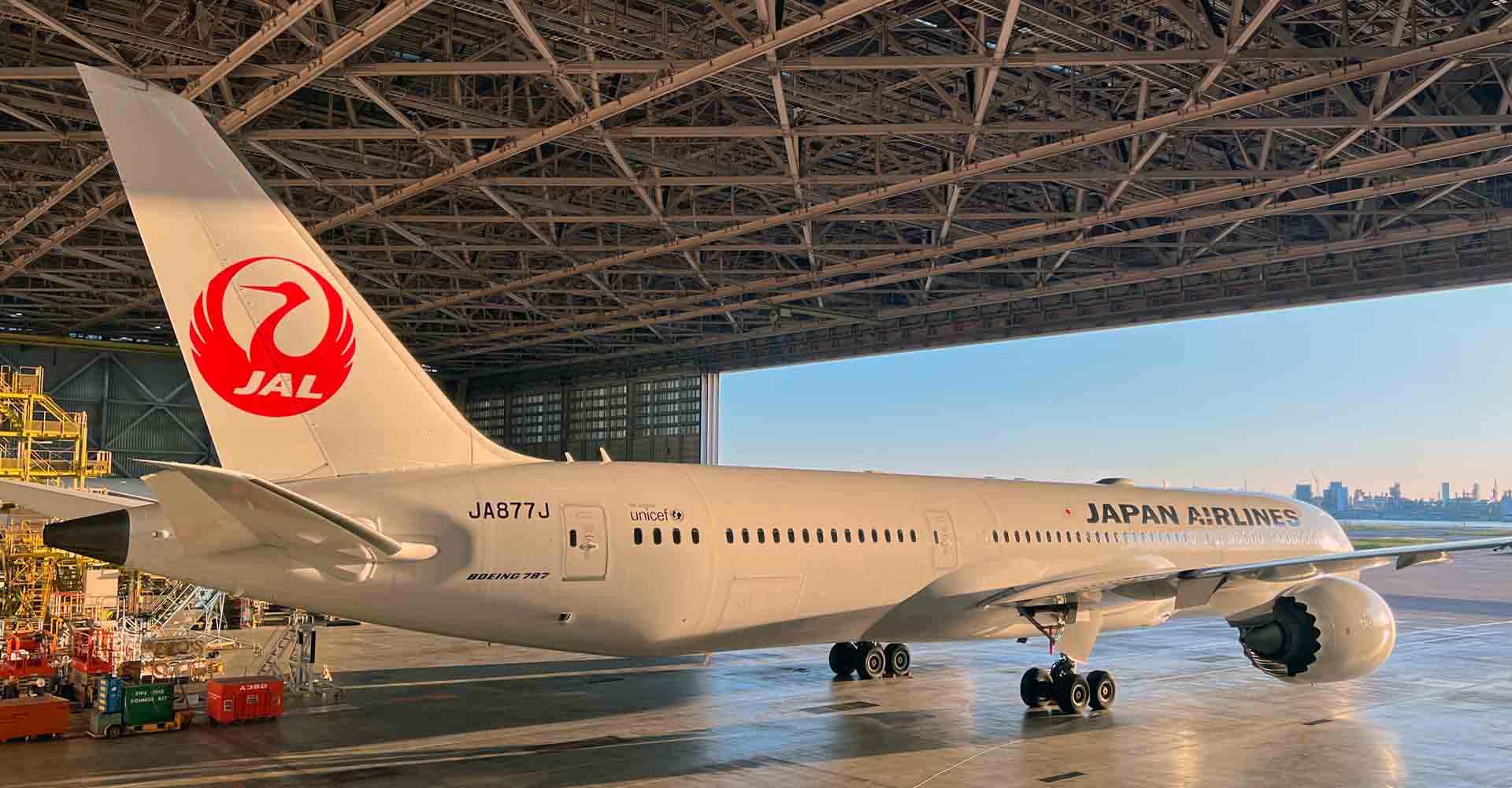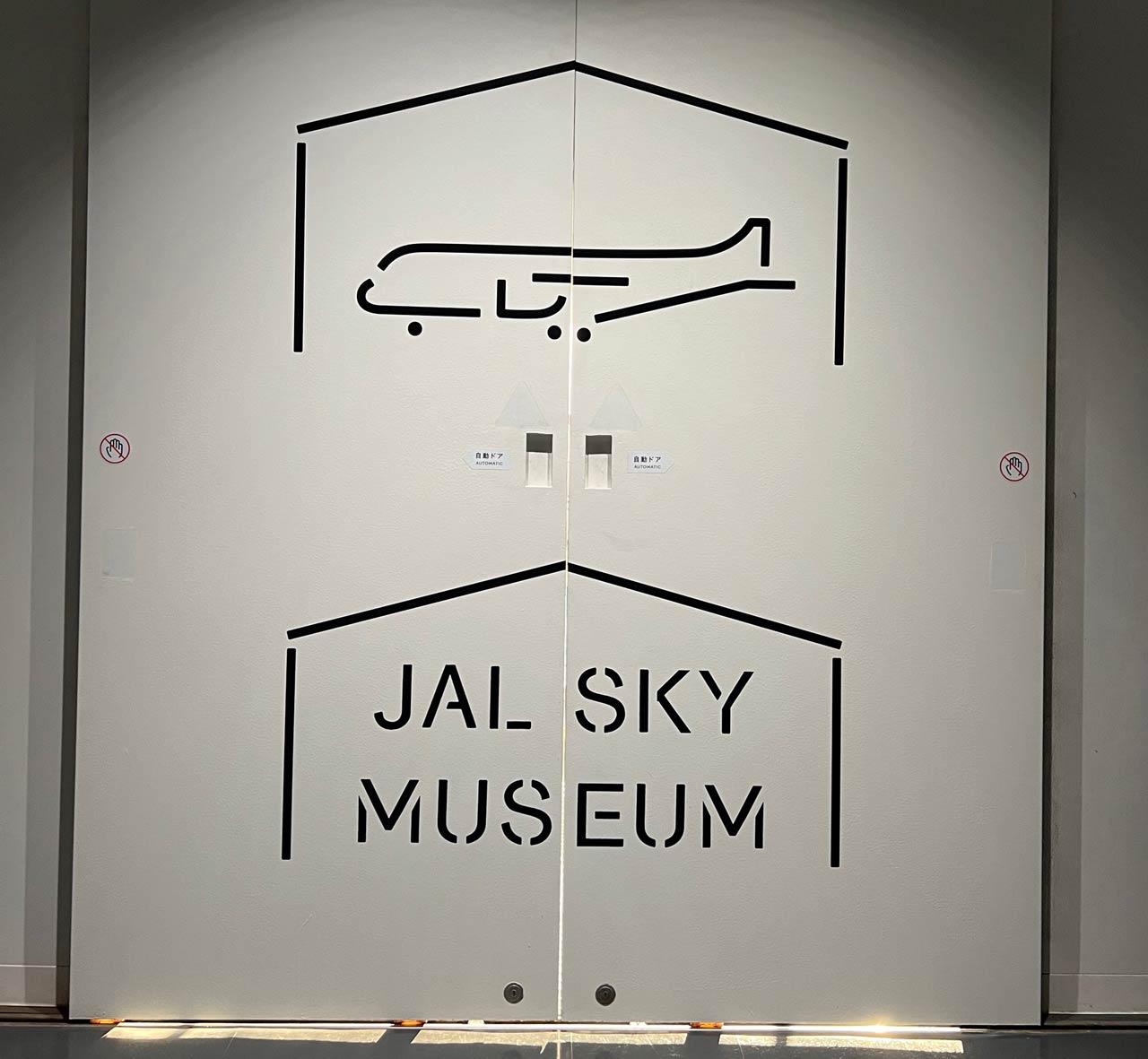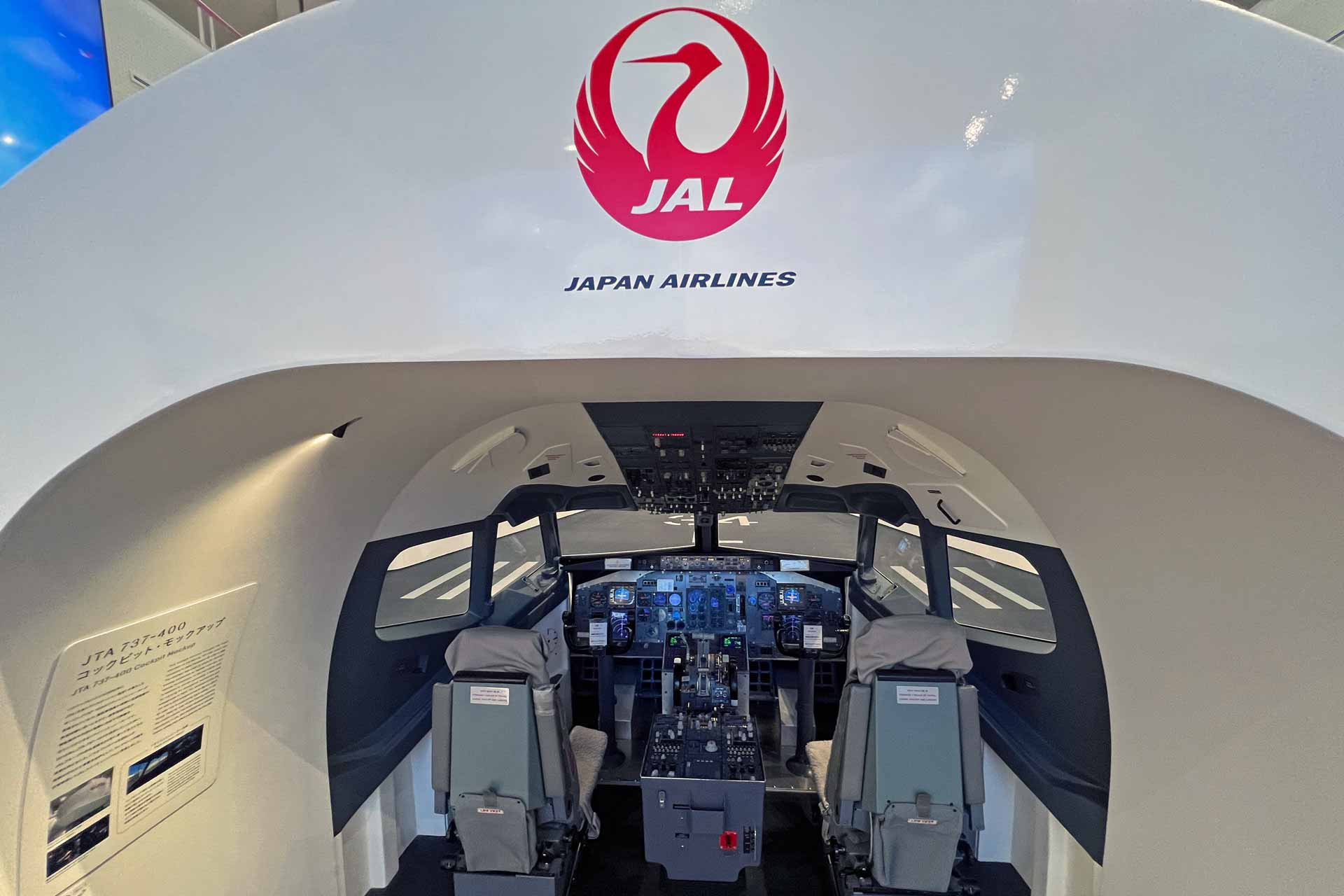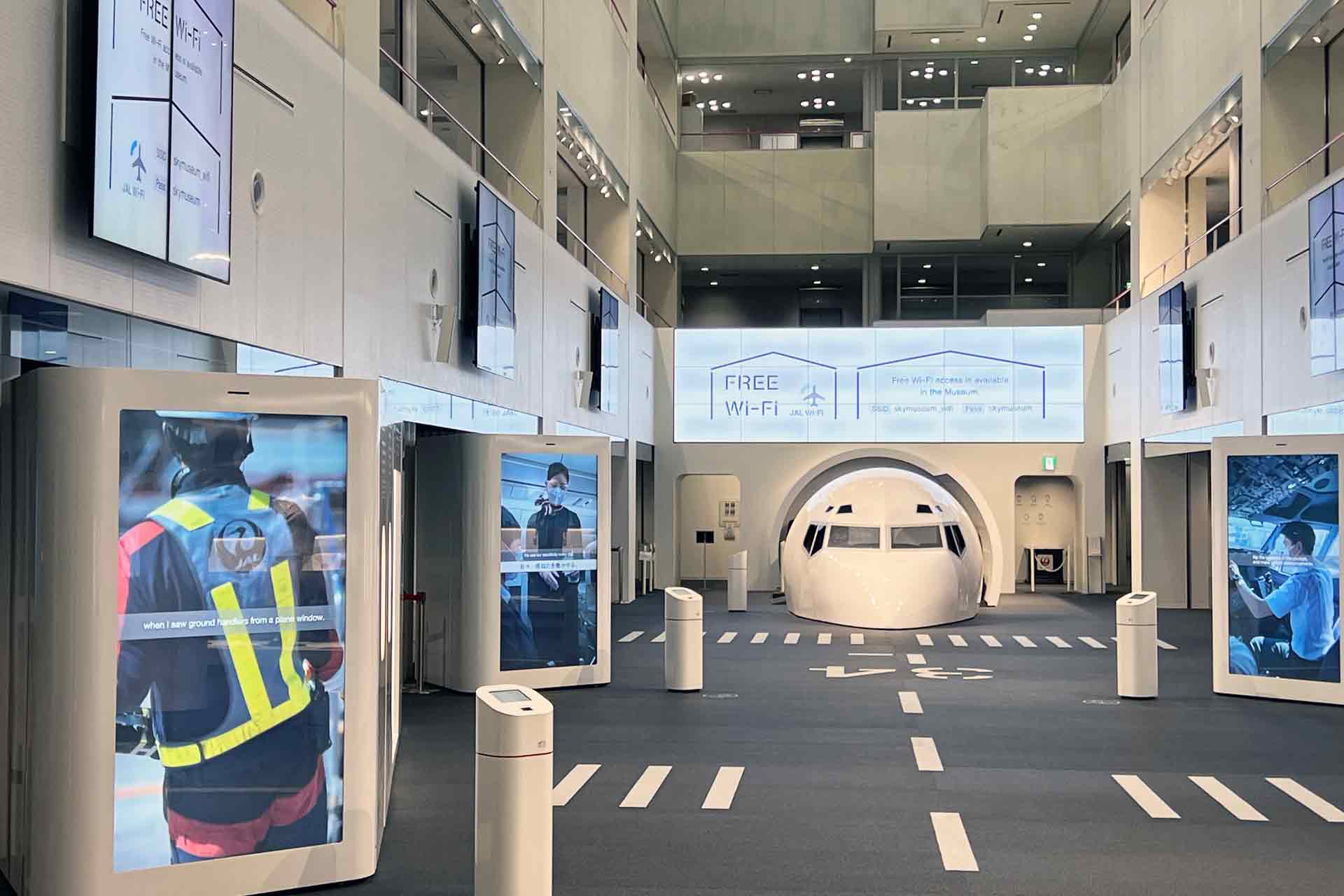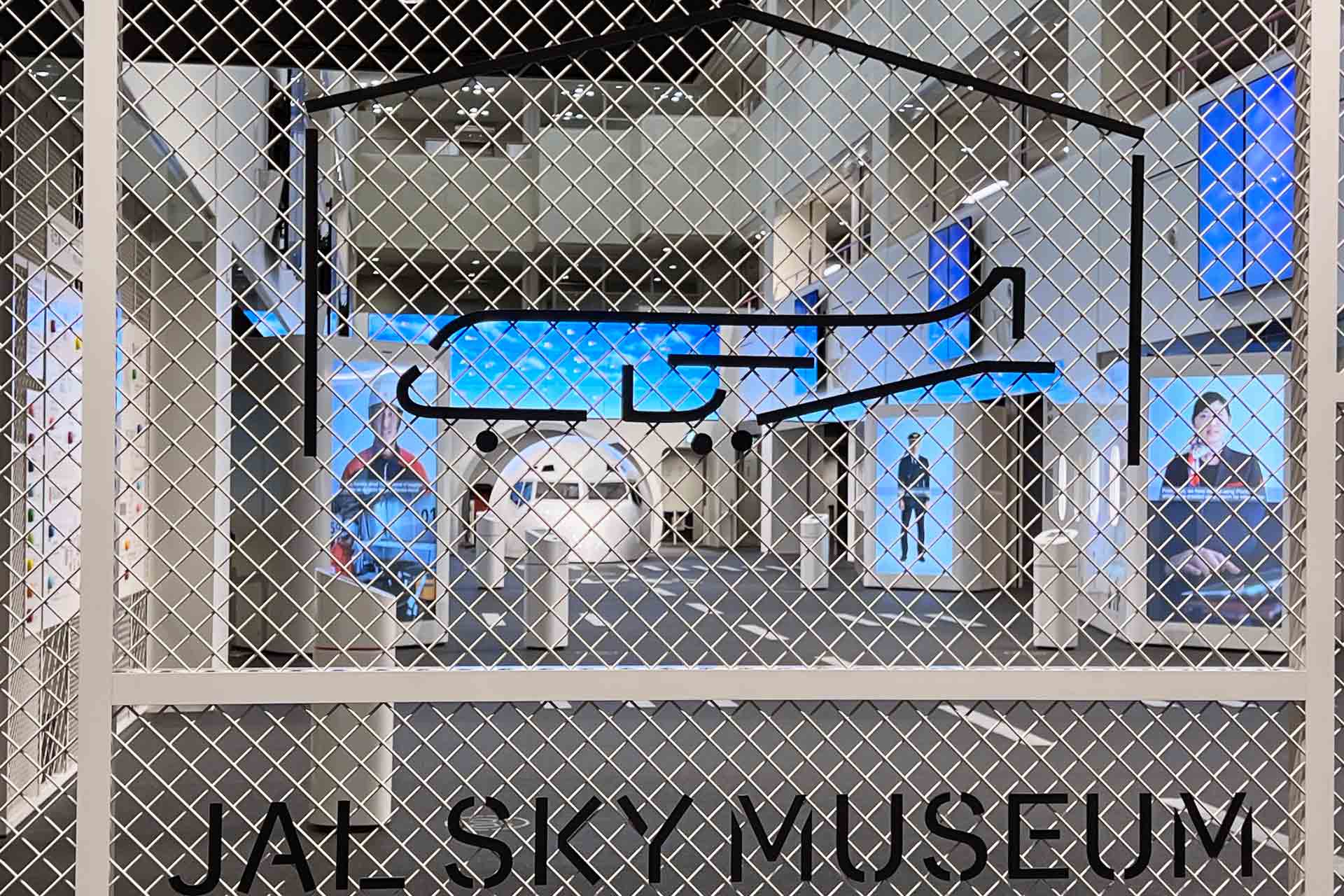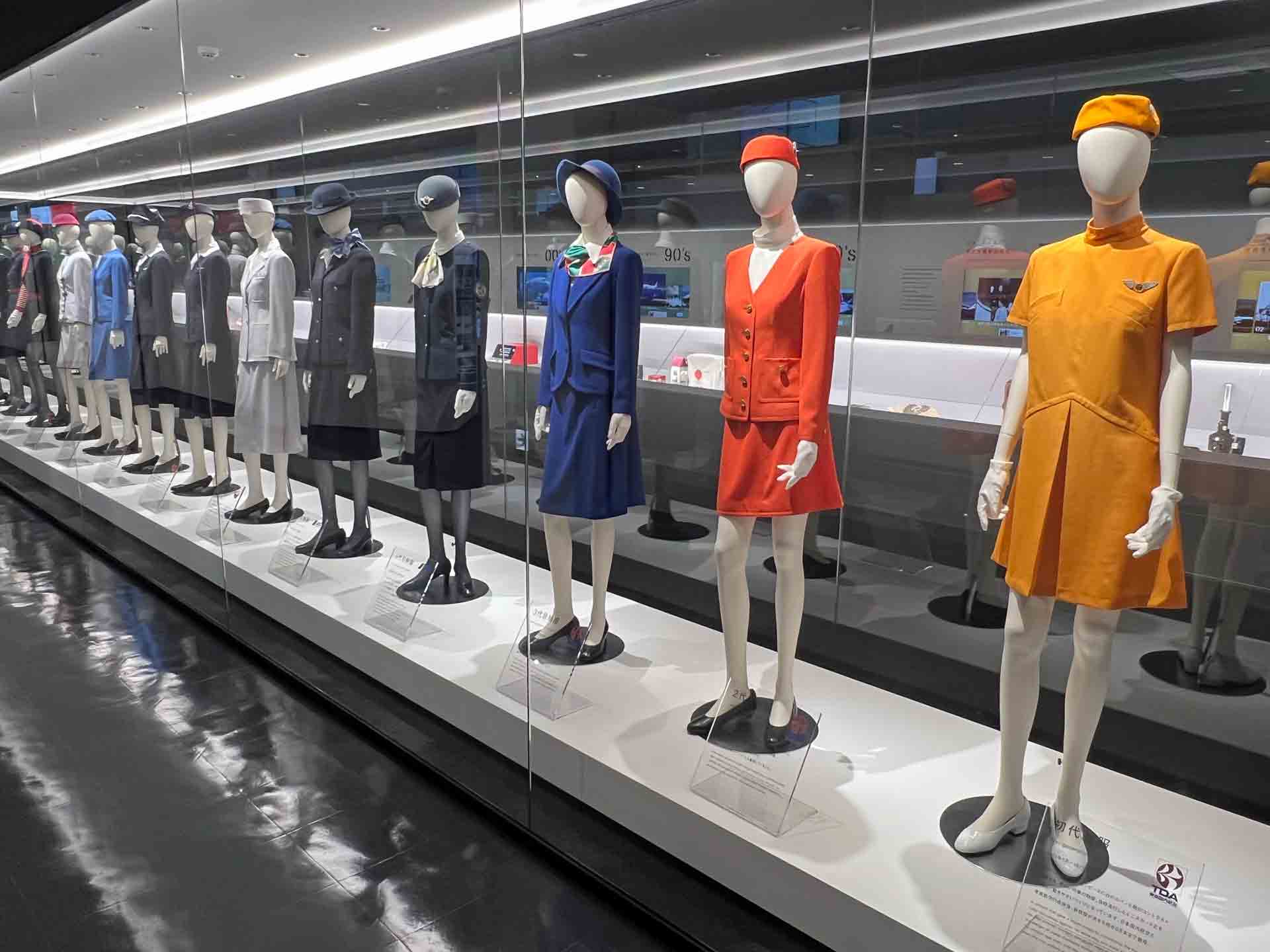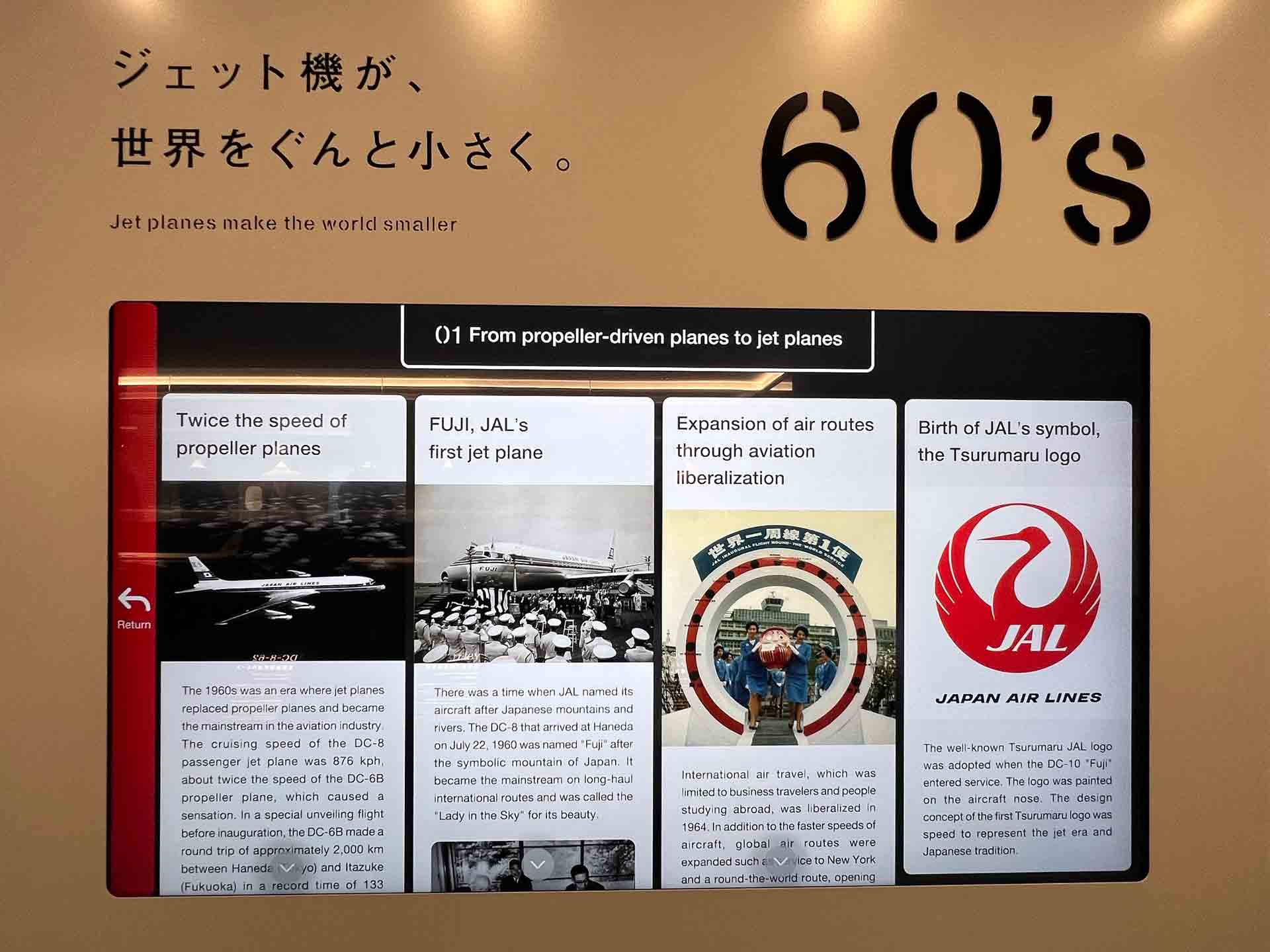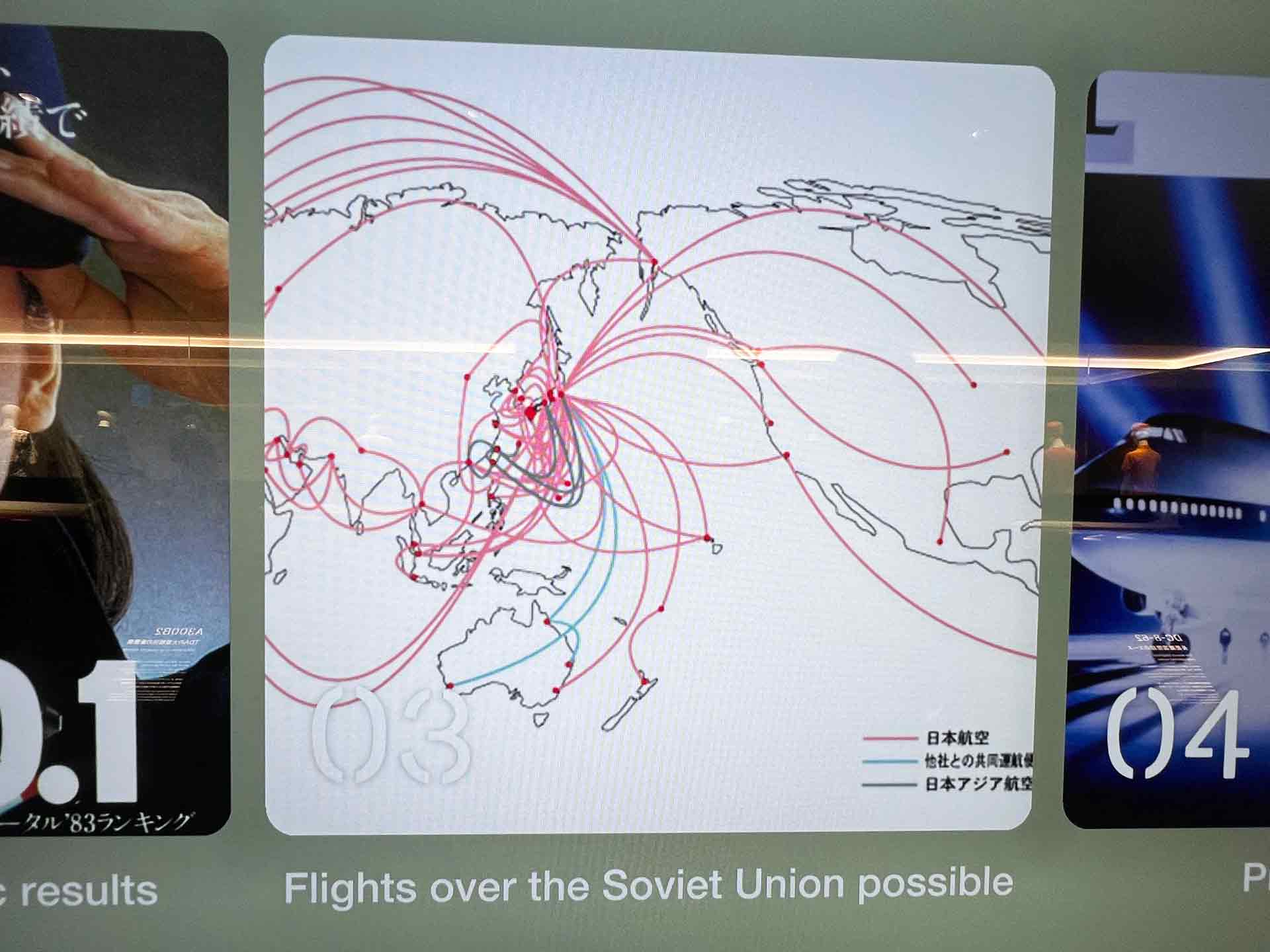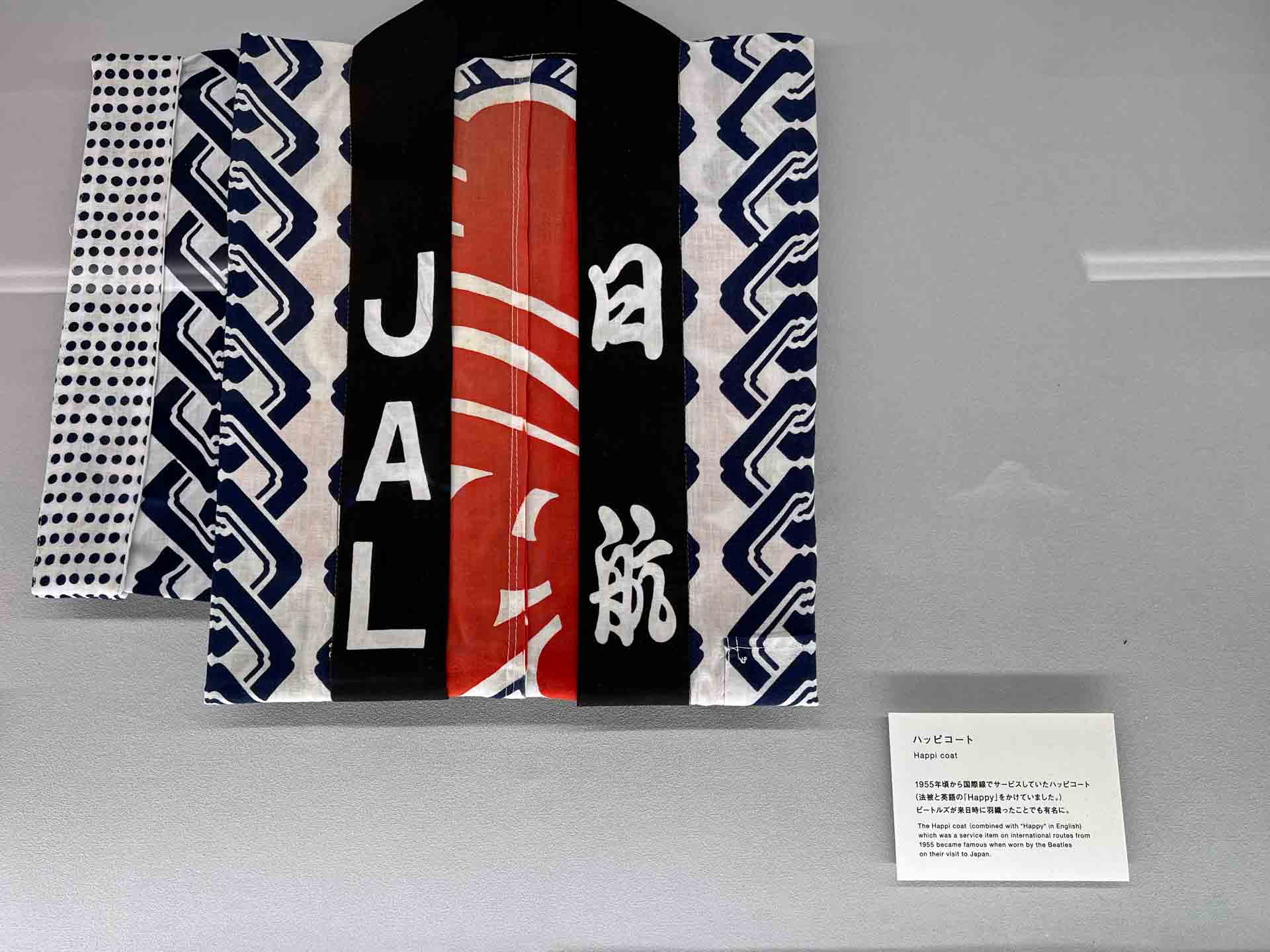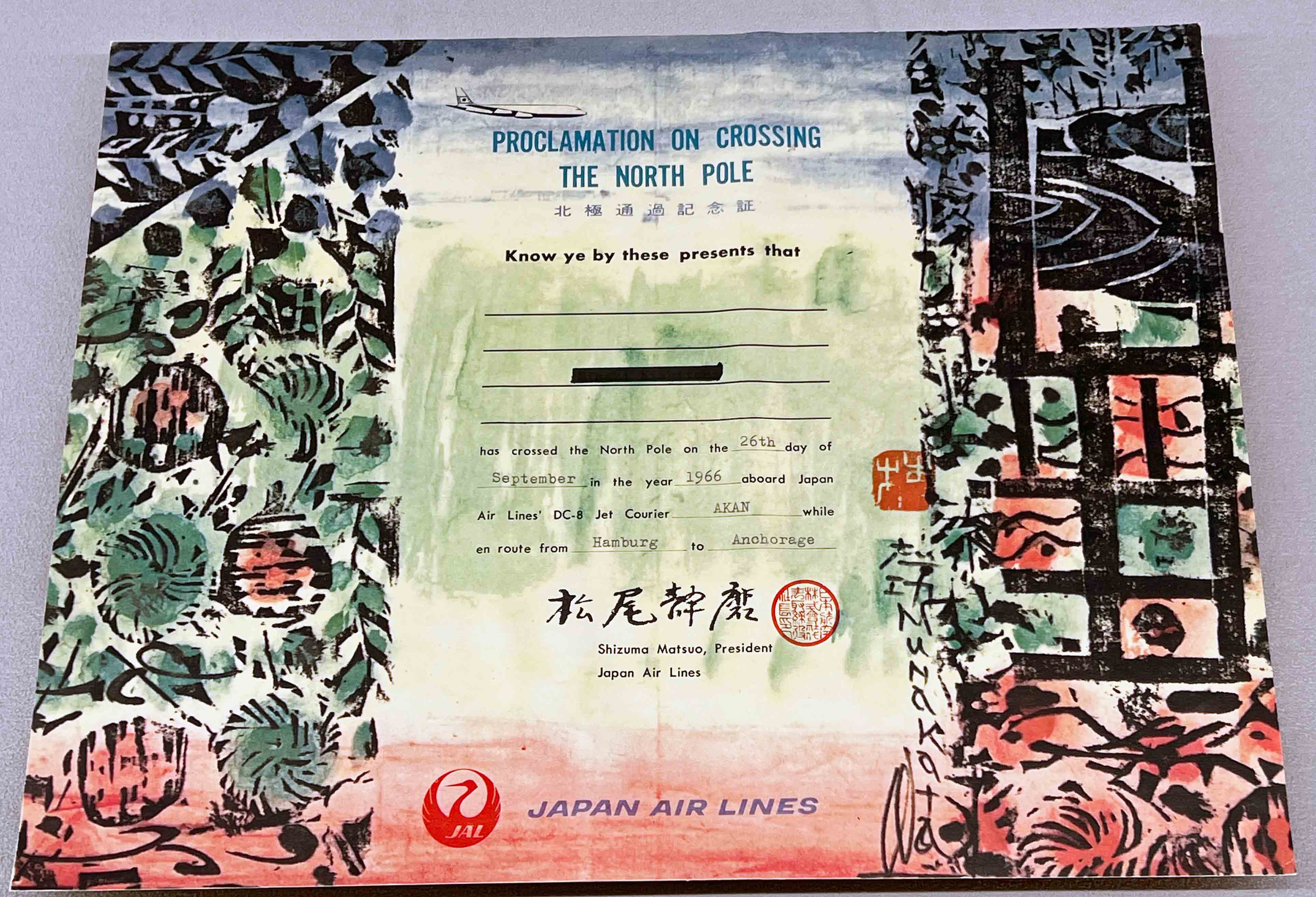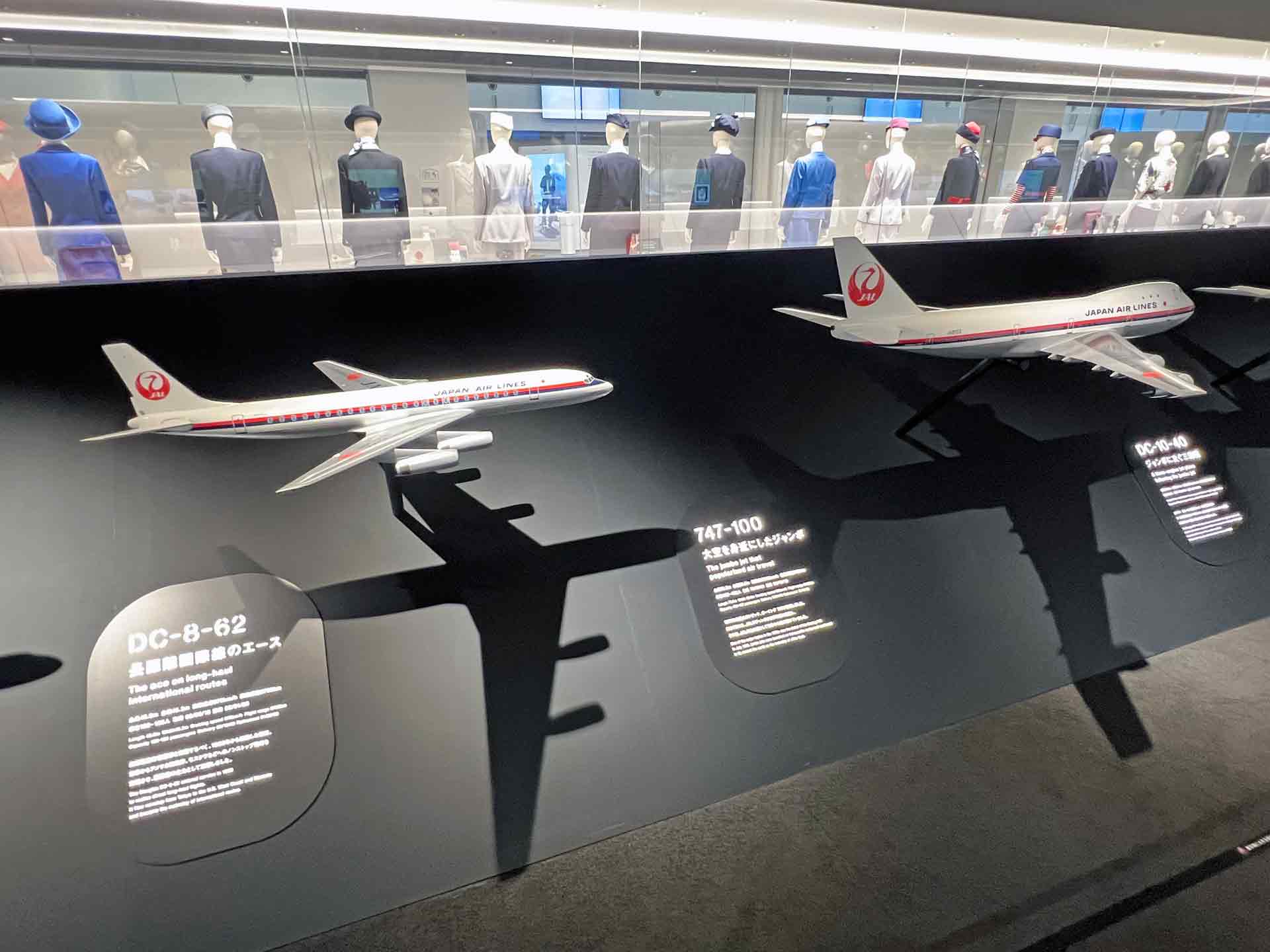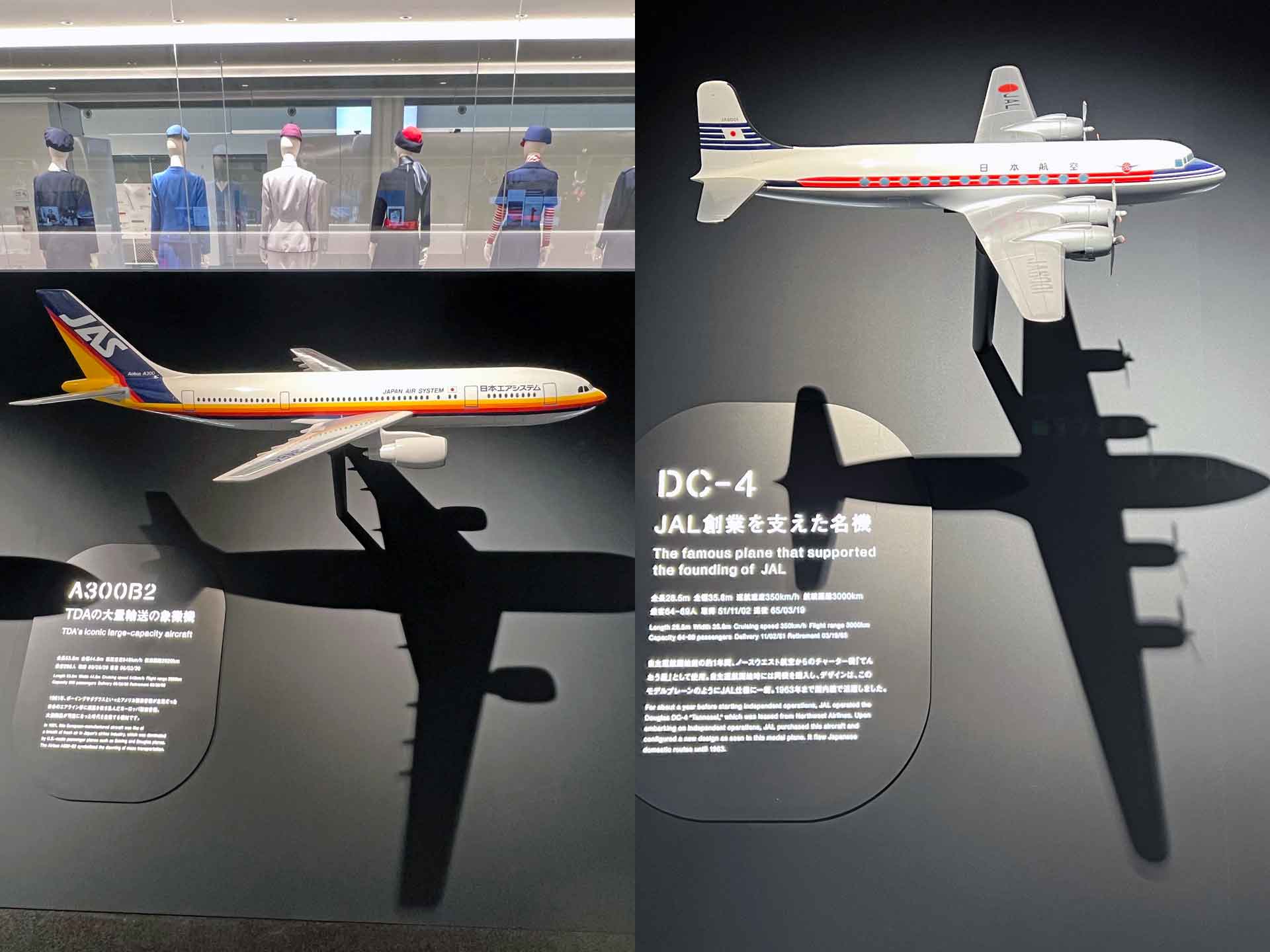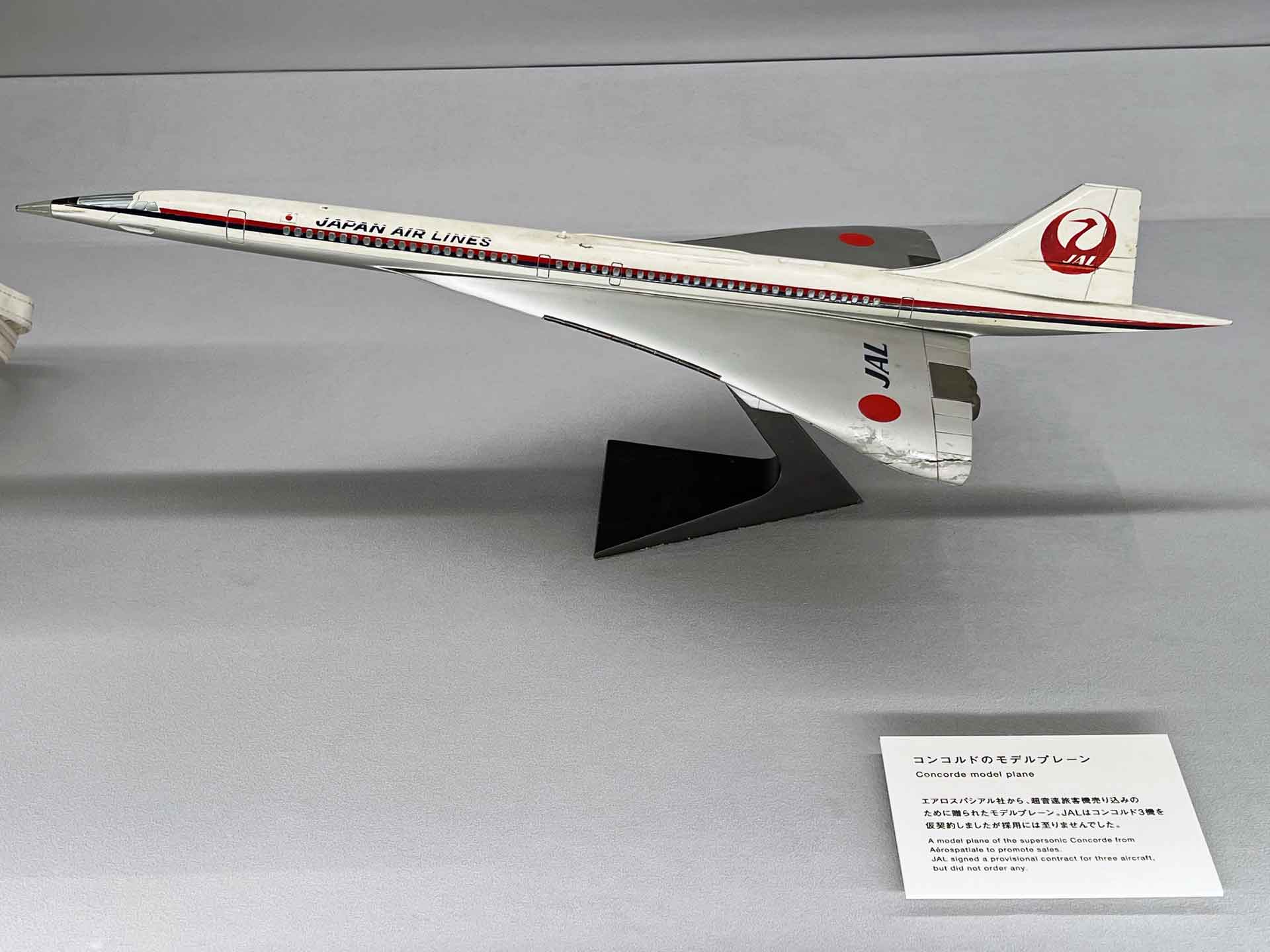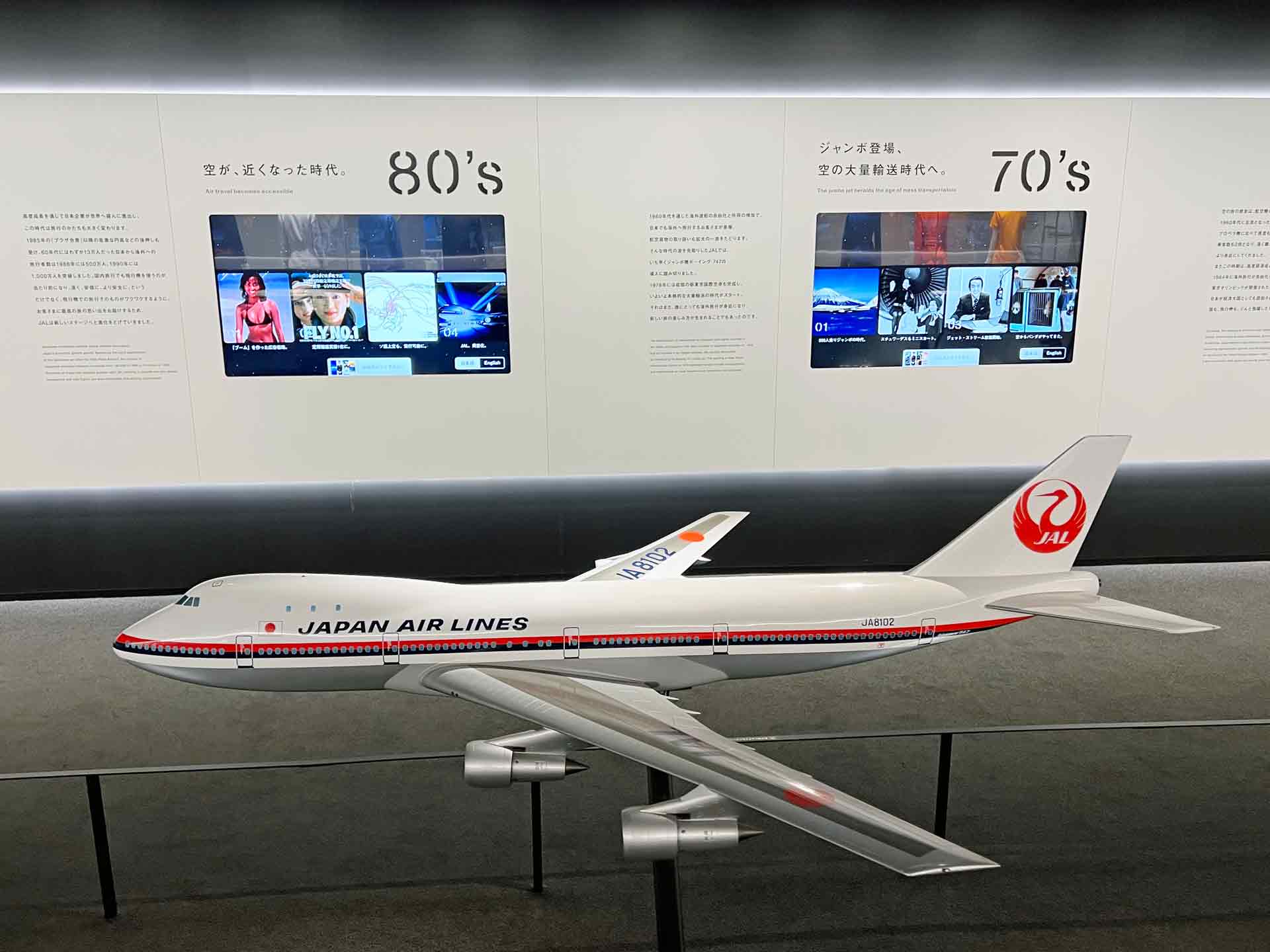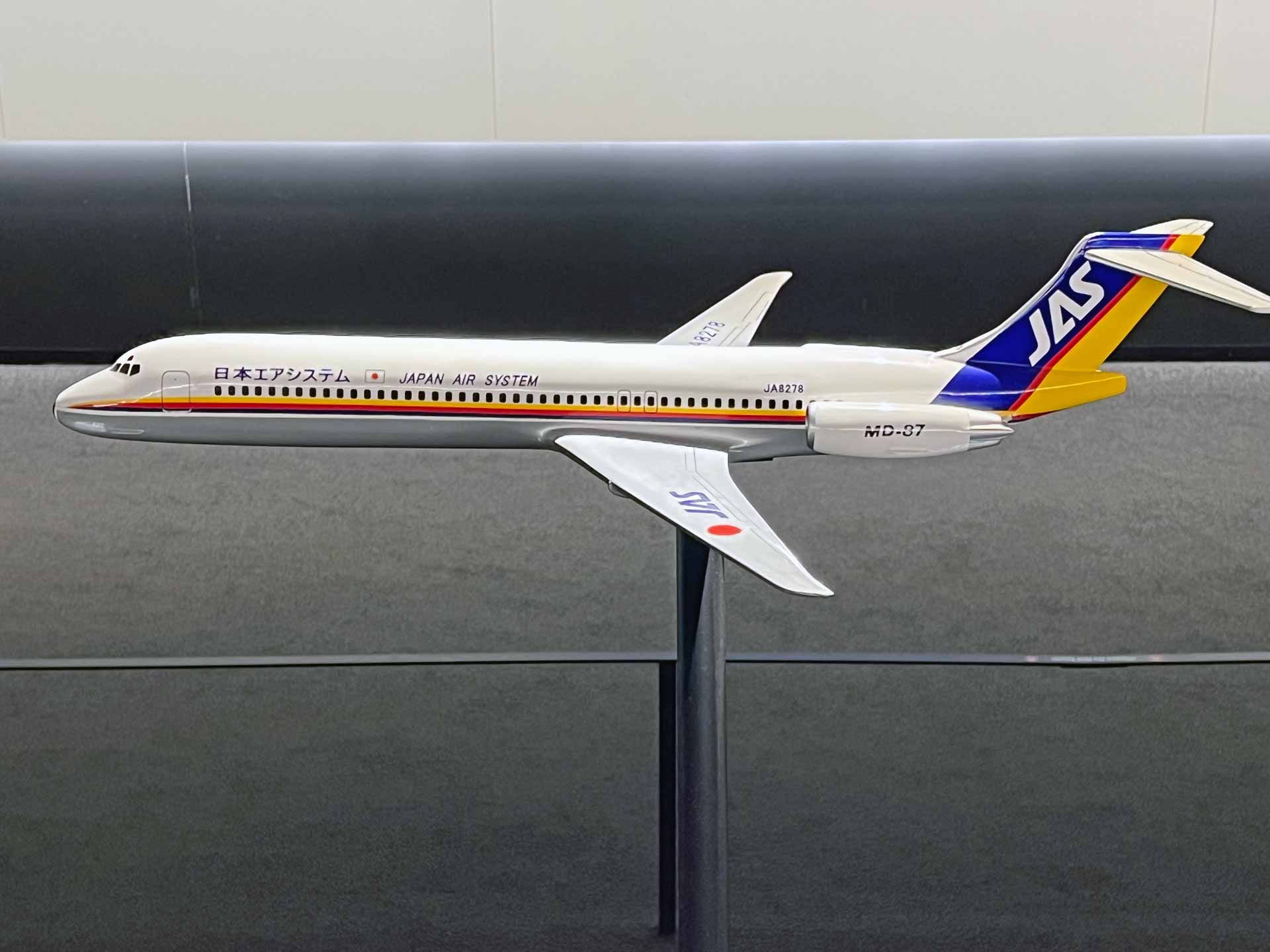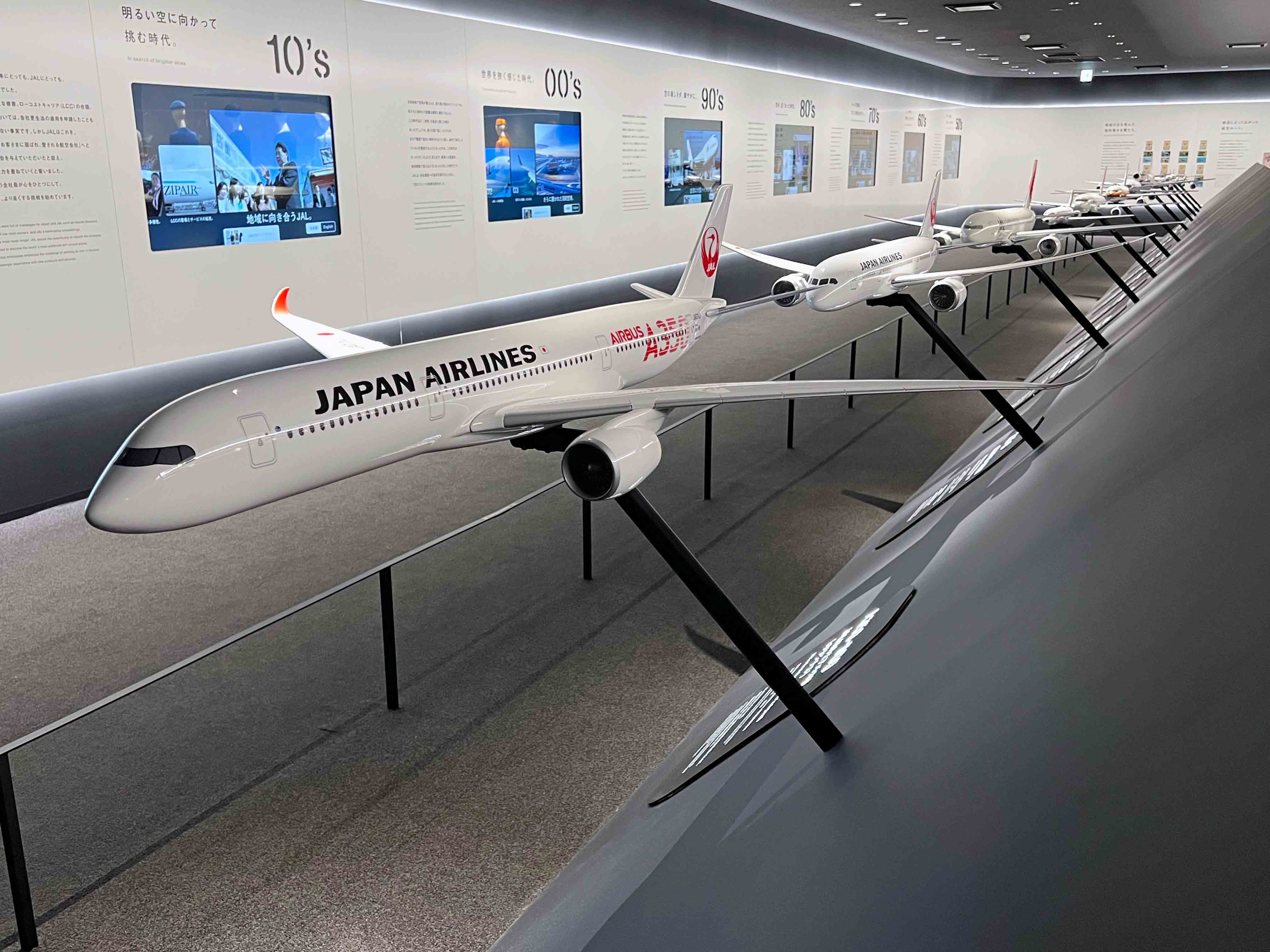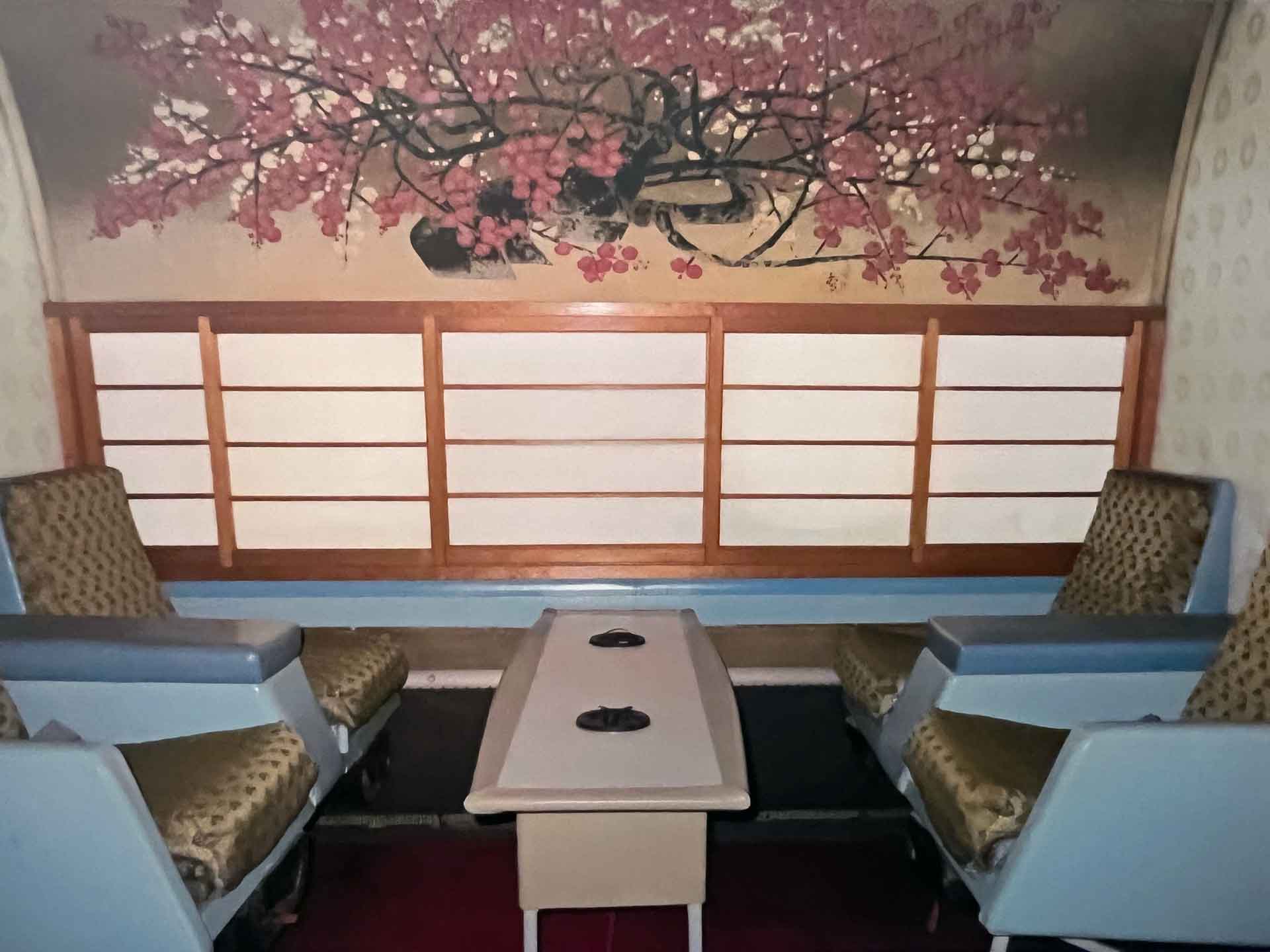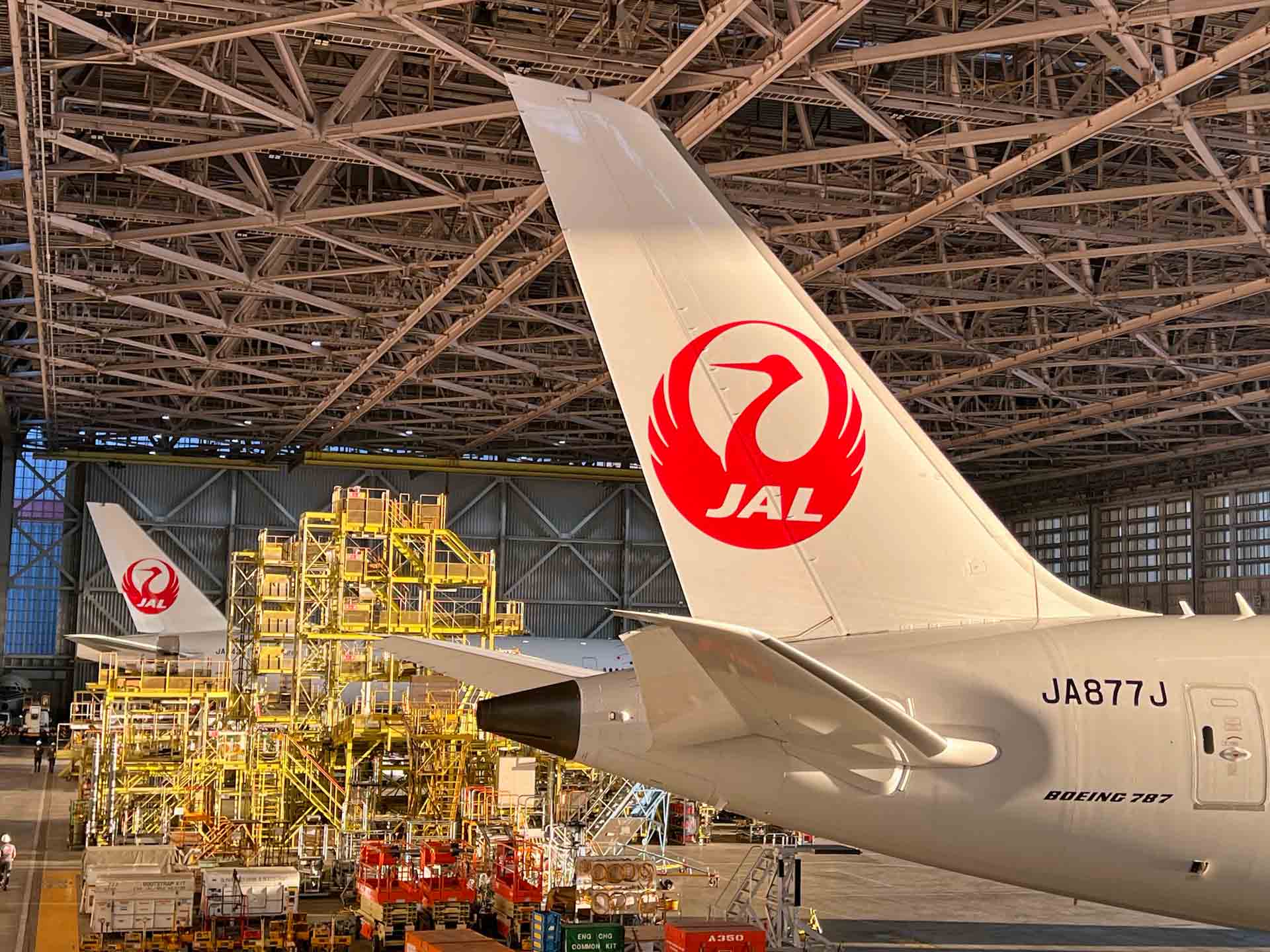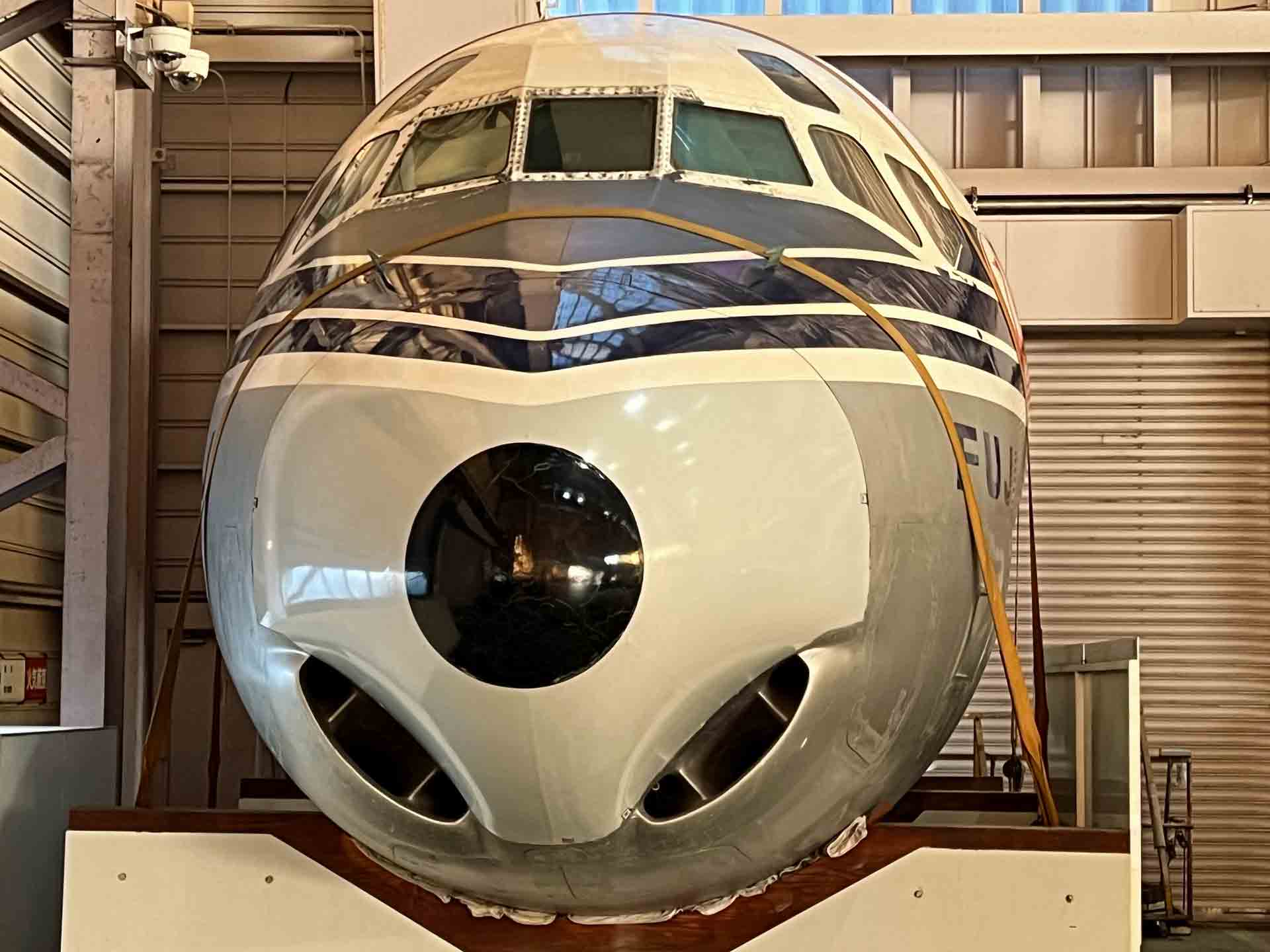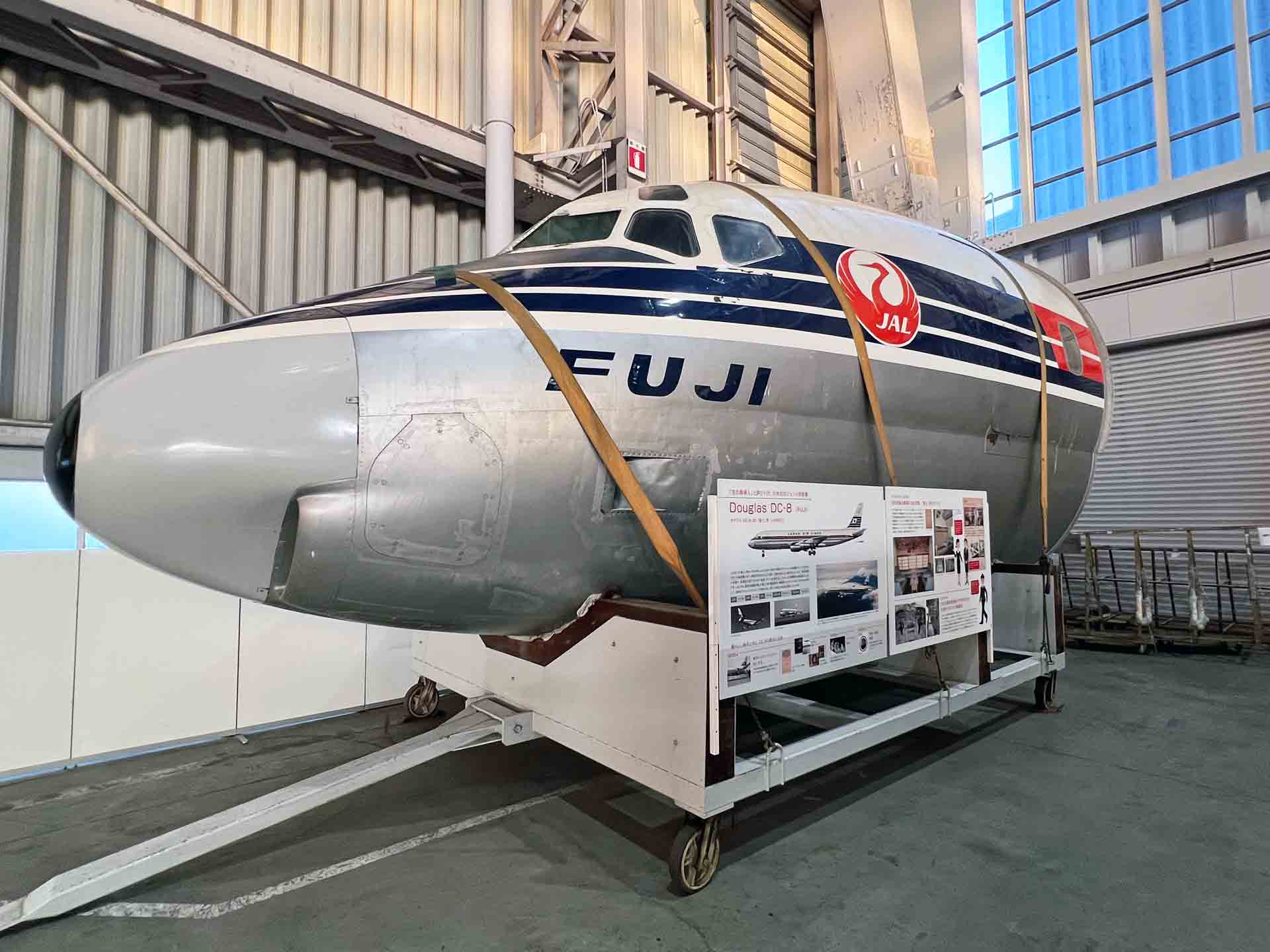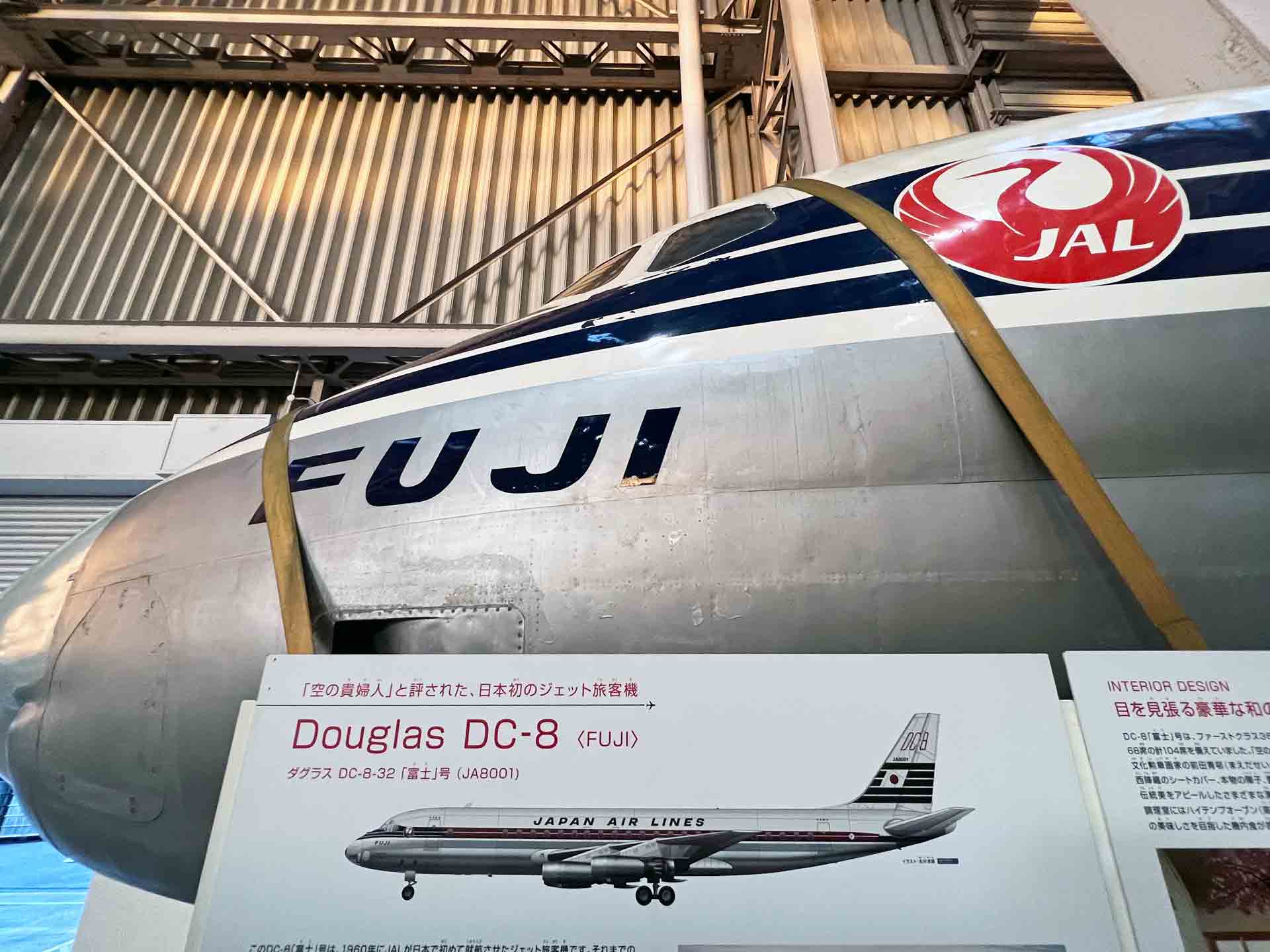The home of the Tsuru
The JAL Skymuseum at Tokyo Haneda airport is modern and entertaining, but most of all it offers a glimpse into the illustrious history of Japan’s national airline that not much is known about in the West. As an add-on to a visit there is a tour through the maintenance hangar – with a surprise waiting at the end.
Not many major airlines run company museums that are accessible to the public, and you won’t find the Skymuseum of Japan Airlines (JAL) by accident. It’s located almost next to a runway of Tokyo’s biggest airport (and Japan’s biggest, ranking third in the world) in Haneda, only about half an hour by monorail from the city centre. But it is hidden in the JAL maintenance area and can be visited only after prior registration online. But it’s worth it! The modern presentation and the interesting artifacts exhibited make avgeek’s hearts beat faster. Visitors enter the Skymuseum in the atrium of the maintenance building via the Sky Runway, a display area resembling a runway. Here descriptions are given about interesting jobs JAL offers, as well as showing simulators of a cabin and a Boeing 737 cockpit. Japanese love to take photos of themselves, here visitors can put on uniforms and pose. Most interesting is the “archive zone”, as here, rare original pieces are shown. One learning is that the classic JAL logo is called Tsurumaru and shows a crane, Tsuru in Japanese.
The JAL
Skymuseum offers a hands-on aviation experience. Visitors can take a seat in
the cockpit of a Boeing 737 simulator and even have a look into the active
maintenance hangar right next to the museum.
Pioneer from the land of the rising sun
On October 25, 1951, JAL first took off on a domestic flight operating a Martin 202 Jupiter from Tokyo via Osaka to Fukuoka. Only on February 2, 1954, the international age began for Japan Airlines with the first flight on the route Tokyo-Wake Island-Honolulu-San Francisco. At the time a bi-weekly service, single fares cost 650 US dollars, about 7,600 dollars in today’s worth. From this era is the sextant in the museum, used to get the accurate position through a transparent cupola in the cockpit roof. Or the “Happi Coat”, a kind of silk cardigan adorned with the JAL logo given to First Class passengers as an onboard gift since 1959. This signature garment became world-famous when the Beatles exited a JAL DC-8 in Happi Coats, arriving in Tokyo after a transpolar flight in June 1966. Also, there are colourful certificates on view at the Skymuseum giving testimony of transpacific flights crossing the international date line since the 1950s and of flights crossing the North Pole since 1960. From 1986 Japanese aircraft were able to use the direct route via Siberia to Europe for the first time, reaching London and Paris by much shorter flights. Since the Ukraine war, this has unfortunately ended for both Japanese and Western jets.
JAL looks
back on a rich history since 1951, during which it became a pioneer in many
fields. From flights over the North Pole or across the International Date Line
up to the first route over the then Soviet Union to Europe from 1986. The
colourful Happy Coats are still a beloved First Class souvenir. Uniforms,
however, were never colourful at JAL, only at other domestic airlines later
merging with JAL, their uniforms are on display as well.
JAL’s
proud aircraft parade
Japanese people love aircraft models, and at the Skymuseum they are having a field day. All aircraft types JAL has operated in its long history are on display here in the form of large-scale models. From propeller-driven airliners such as the DC-4, DC-7 or the locally built YS-11 up to the newest Airbus A350. Also models of fleet members of former airlines that were merged into JAL are shown, carriers that have long been history. For example, an early Airbus A300 B2 that originally flew for Toa Domestic Airlines (TDA), changing its identity to Japan Air System (JAS) after a merger in 1998, which in turn ended up becoming a part of JAL in 2004. Interestingly, JAS adopted the exact Airbus company colours of the time for its own livery. Also, the model of a JAS MD-87 shows similar colours. The most impressive display is a tin model, a bit scratched and vintage 1960s: Concorde in JAL colours. The Japanese had signed three options, but never flew supersonic.
Die Flotte von JAL seit 1951 ist vollständig in Modellen repräsentiert, die im Skymuseum ausgestellt sind. JAL selbst hat bis zur Ankunft der ersten A350 im Jahr 2019 immer nur amerikanische Flugzeuge bestellt, die von ihr betriebenen A300-600 kamen erst nach der Übernahme von JAS zur JAL. Einzige andere Ausnahme war die YS-11, eine Turboprop aus japanischer Produktion, die aber auch von TDA/JAS übernommen wurde. Nur ein halbes Jahr nach Pan Am nahm JAL im Juli 1970 ihre erste Boeing 747-100 in Betrieb, sie sollte später die weltweit meisten 747 in ihrer Flotte haben.
Highlight in the hangar
While visitors can roam through the museum on their own, there is a highlight afterwards that can only be seen on a guided tour and with everybody’s heads protected by white helmets. A white door opens, and you are standing in the active JAL maintenance hangar with a stunning view from a higher stand into the wide space. Almost any time there are some JAL aircraft around here, waiting for their next flight, mostly Boeing 787s. With a bit of luck, hangar doors are open, bringing in view the adjacent runway and flight movements right in front. During some times of year and in good weather, the late afternoon sun shines straight inside, and after sunset, the silhouette of Mount Fuji starts to glow behind the terminal on the opposite side. That’s also the name of the visit’s highlight, hidden in the very farthest corner of the hangar: The nose section of a former JAL DC-8-32, christened Fuji. This is part of the first DC-8 the Japanese got, delivered in July 1960 as the 78th example ever of this four-engine jet, new at the time. Behind the cockpit windows, this aircraft displays the Tsurumaru logo with extended wings as the first ever JAL jet. The red crane then adorned the JAL tails until 1989 and was brought back since 2011.
Visiting
the active JAL maintenance hangar in Haneda is one of the highlights of the
museum experience. In the farthest corner the front section of JAL’s first DC-8
is hidden, delivered in 1960. At the time there was a lavish lounge in the
front, used for example by the Beatles when they first travelled to Japan in
1966 for their sensational concerts.
Text and photos: Andreas Spaeth
Informations

